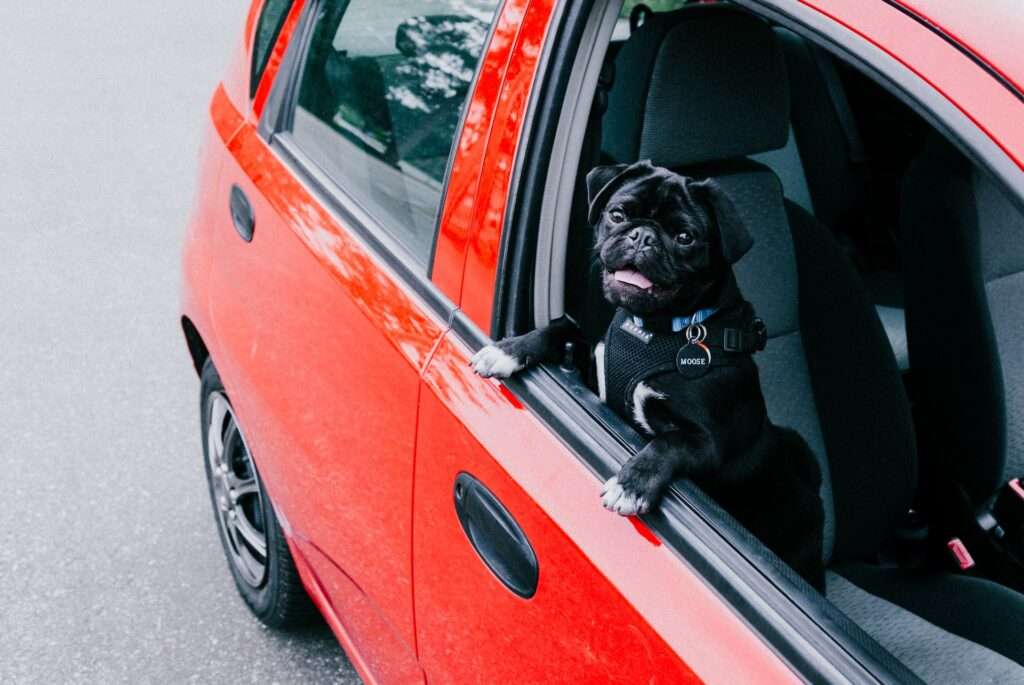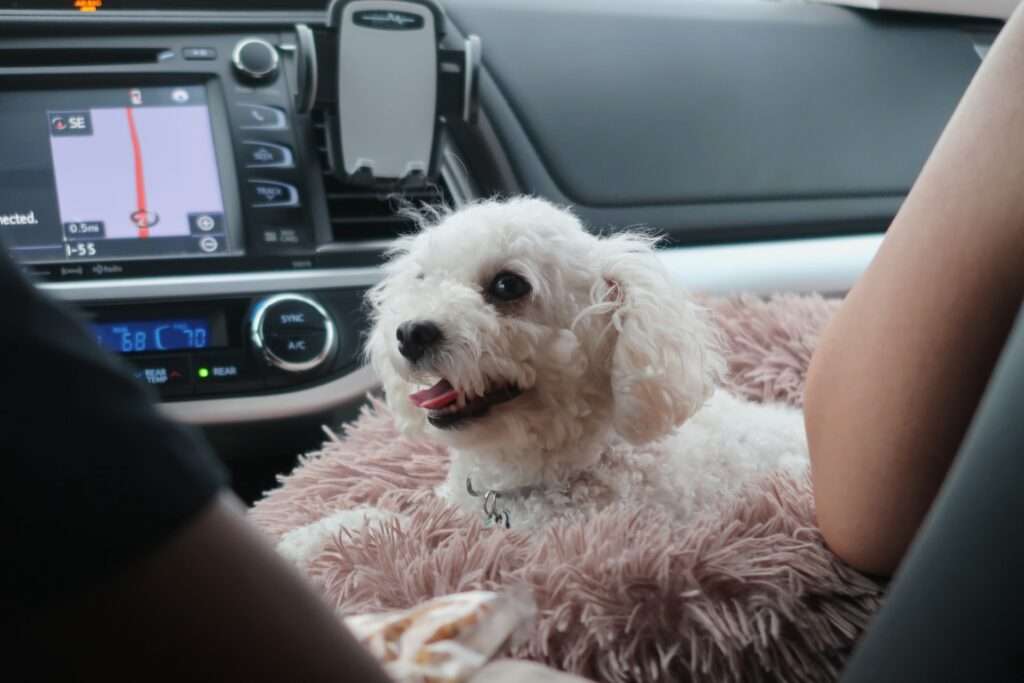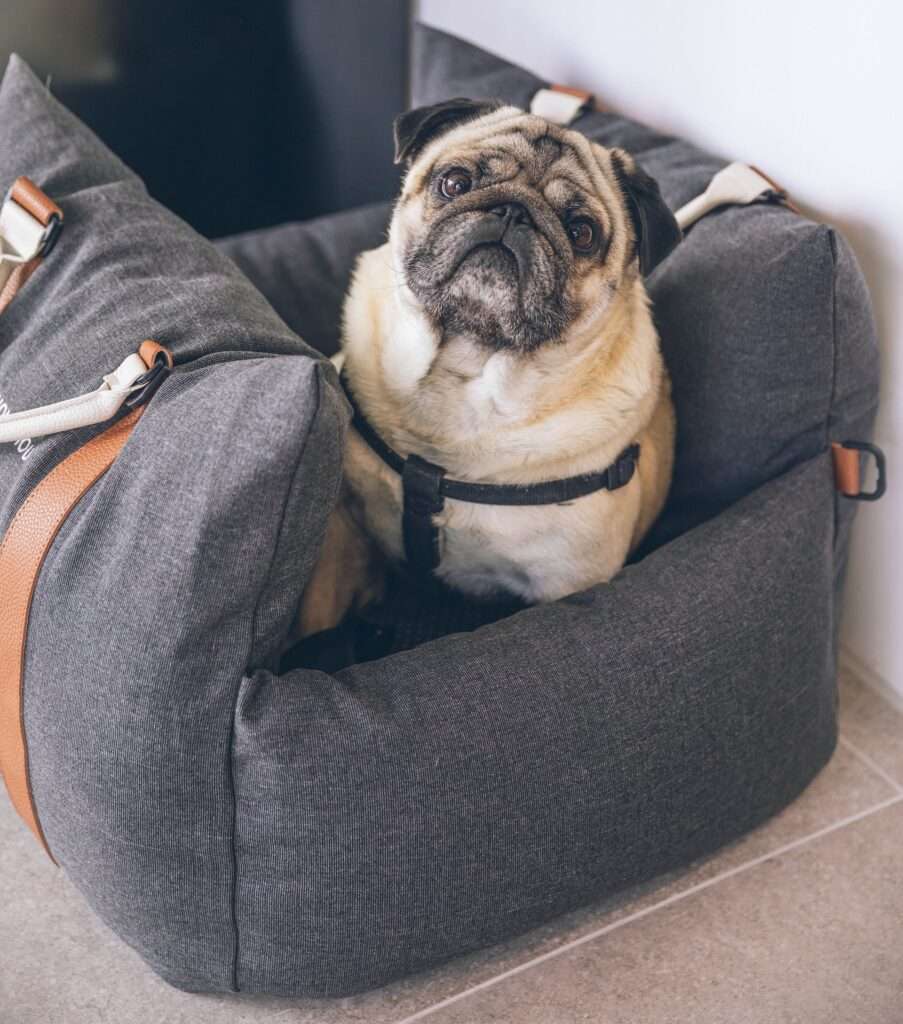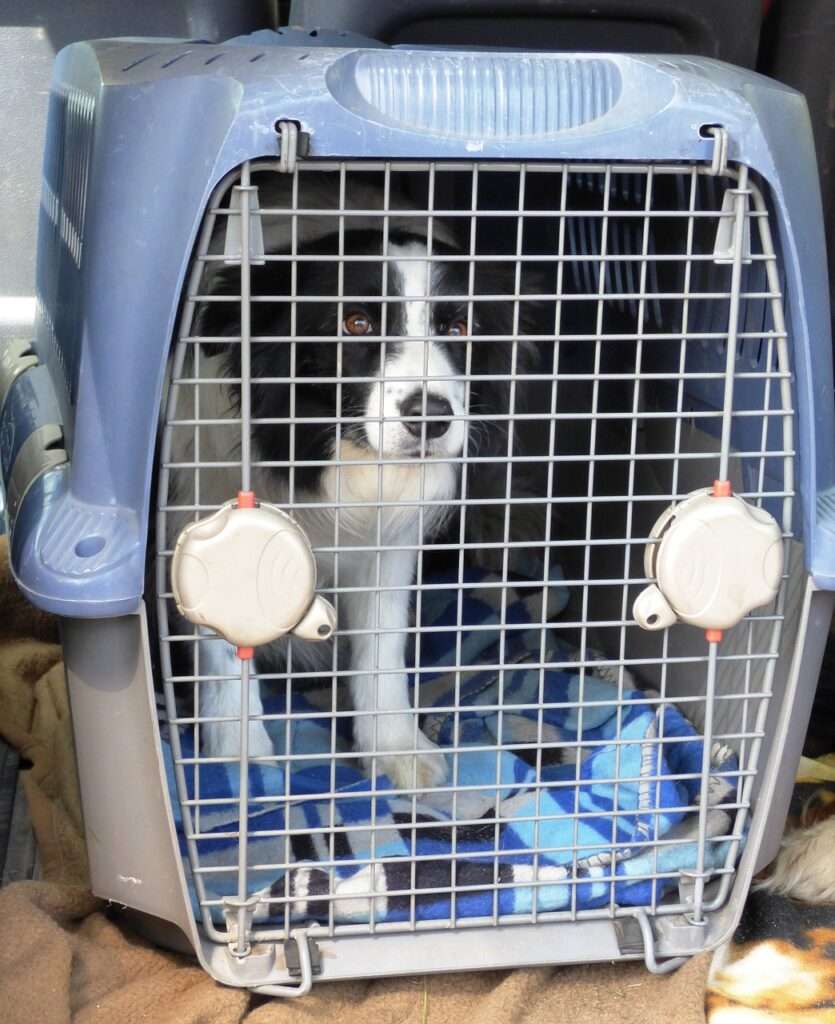Why Does My Dog Pant in the Car? 6 Common Triggers and Solutions
Woof, welcome to BarkLikeMeow’s ultimate guide on why our furry friends pant in the car! If you’ve ever wondered why your adorable pooch gets a little breathless during those exciting car rides, you’ve come to the right place. We understand the importance of deciphering your pup’s behavior, especially when it comes to their well-being.
In this comprehensive article, we’ll delve into the fascinating world of dogs and explore the reasons behind their panting while riding in cars. Buckle up and let’s embark on this journey to unravel the secrets of your canine companion’s car panting!
Understanding the Natural Behavior of Dogs
Before we delve into the specifics, it’s essential to grasp the significance of panting in dogs. You see, our furry buddies are masters of communication, and panting is one of their primary ways to express themselves. It’s like their way of saying, “Hey, I’m feeling something here!”
Panting is completely natural for dogs, and it serves a variety of crucial purposes. It’s their built-in air conditioning system, designed to regulate their body temperature when things get a little too toasty. Imagine wearing a fur coat all the time—that’s our pup’s reality, so a little huffing and puffing helps them keep their cool.
Moreover, panting is a dog’s go-to stress manager. If they feel anxious or excited, they might pant as a way to cope with their emotions. It’s a bit like us taking deep breaths when we’re nervous or overwhelmed.
Oh, and here’s an interesting tidbit! Our canine companions have a remarkable respiratory system that’s quite different from humans. So, even though panting might seem intense to us, it’s perfectly normal and healthy for them.
Why Do Dogs Pant in the Car?
Alright, paws up, let’s talk about the factors that can influence our pup’s panting while cruising in the car! You know how your dog’s comfort matters, especially when they’re all excited about going on an adventure.
Environmental factors that affect your dog’s comfort in the car
- Temperature inside the car: Just like us, dogs can feel the heat, and a stuffy car can make them pant to stay cool. Make sure to keep the temperature comfortable for your furry co-pilot.
- Airflow and ventilation: Fresh air is like a breath of fresh life! Adequate ventilation can make a world of difference in keeping your dog relaxed during the ride.
- Noise levels and vibrations: Some pups are sensitive to loud noises or bumpy rides, which might lead to nervous panting. Reducing noise and providing a smooth journey can help ease their stress.
Motion sickness and its impact on your dog’s panting
- Symptoms of motion sickness in dogs: Watch out for signs like excessive drooling, vomiting, or restlessness, as these could indicate motion sickness.
- How it affects your dog’s respiratory system: Motion sickness can throw our furry pals off balance, causing them to pant more than usual.
- Coping mechanisms for motion sickness: Gradual exposure to car rides, short trips, and a calm environment can help your dog build tolerance and overcome motion sickness.
Anxiety and Fear in Car Rides
Let’s face it; some pups get a little anxious or fearful when the car engine roars to life. Understanding their worries and fears can pave the way for smoother, stress-free journeys together!
Identifying signs of anxiety or fear in dogs during car rides
- Pacing and restlessness: If your dog can’t sit still and seems fidgety, they might be anxious about the ride.
- Trembling or shaking: Sometimes, dogs exhibit physical signs of fear, like trembling or shaking, which can accompany panting.
- Avoiding the car: If your pup pulls a disappearing act when it’s time to hop in the car, they might be telling you they’re not too keen on the idea.
Common triggers for anxiety and fear in the car
- Previous negative experiences: A scary past car ride might create lasting apprehension for your dog.
- Lack of familiarization with car rides: Some pups need time to get used to this new, moving metal beast!
- Noise aversion and phobias: Loud traffic or unfamiliar sounds can spook your pup, making them uneasy about car rides.
Techniques to ease your dog’s anxiety during car travel
- Positive reinforcement and desensitization: Treats, praises, and patience can work wonders in building positive associations with car rides.
- Calming aids and supplements: Sometimes, a little natural help can go a long way. Consult your vet about safe supplements or calming aids.
- Behavioral training tips: Professional dog trainers can assist you in addressing your dog’s fears and turning those car rides into enjoyable adventures!
Stay tuned for the next segments where we’ll delve into physical health considerations, breed-specific quirks, and age-related factors affecting your furry co-pilot’s car ride experiences! Remember, understanding your pup’s needs is the key to fostering a lifetime of wonderful memories together!
Physical Health and Medical Considerations

Ensuring your furry friend’s well-being is a top priority, especially during those fun car rides. Let’s dive into the importance of physical health and medical considerations for your canine co-pilot!
Underlying health conditions that may cause panting in the car
- Respiratory issues: Certain respiratory conditions, such as tracheal collapse or brachycephalic obstructive airway syndrome (BOAS), can lead to increased panting in the car.
- Cardiovascular problems: Heart-related conditions might cause your dog to pant more as their heart works harder to pump blood.
- Heatstroke and dehydration risks: Cars can heat up quickly, posing a serious risk of heatstroke and dehydration, especially for brachycephalic breeds or during hot weather.
Recognizing signs of distress and medical emergencies during car rides
- Heavy, rapid panting: While panting is normal, excessively heavy or rapid panting could be a sign of distress or a medical emergency.
- Excessive drooling: Increased drooling, paired with panting, might indicate stress or an underlying health problem.
- Weakness or collapse: If your dog shows signs of weakness or collapses during a car ride, seek immediate veterinary attention.
How to prepare your dog for car travel to minimize health risks
- Vet check-ups and vaccinations: Regular vet check-ups and vaccinations help ensure your pup is in top shape for every adventure.
- Proper hydration and feeding schedules: Keep your dog hydrated and avoid feeding large meals right before car rides to reduce the risk of bloating.
- Safe restraint systems and crates: Securely restrain your dog using seat belts or travel crates to protect them in case of sudden stops.
Traveling Tips for Specific Dog Breeds
Every doggo is unique, and different breeds have their own quirks when it comes to car travel. Let’s take a closer look at how different breeds handle those exciting rides!
Understanding how different breeds handle car travel
- Calm and composed travelers: Some breeds, like the Golden Retrievers or Labrador Retrievers, are often chill passengers and enjoy the scenery.
- Nervous Nellies: Breeds with sensitive temperaments, such as the Shih Tzu or Chihuahua, might need a little extra reassurance during car rides.
- High-energy explorers: Energetic breeds like Border Collies or Australian Shepherds might need extra mental and physical stimulation to stay relaxed during the trip.
Brachycephalic breeds and their unique challenges
- Breathing difficulties: Brachycephalic breeds, like Bulldogs or Pugs, have adorable flat faces, but this structure can make breathing a bit tougher for them.
- Heat and stress sensitivity: These lovable squishy-faced pups are more susceptible to heatstroke and stress-related panting, so extra precautions are crucial.
Energetic and high-drive breeds in the car
- Keep those minds engaged: High-energy breeds benefit from mental stimulation during car rides, such as interactive toys or puzzle feeders.
- Frequent pit stops: These pups might need more bathroom breaks and stretch time during long car journeys to release pent-up energy.
Remember, every dog is an individual, so observe your pup’s behavior and cater to their specific needs. Tailoring your travel approach will ensure that each adventure is a howling success!
Age-Related Factors

As your furry companion grows older, their needs and preferences might change, even during car rides. Let’s dive into age-related factors that can impact your pup’s car travel experiences!
How puppies and young dogs adapt to car rides
- Novelty and excitement: Puppies are curious little adventurers, and car rides might be an exciting new experience for them.
- Gradual acclimation: Introduce your pup to short, positive car rides to build their confidence and familiarity with the whole travel scene.
- Frequent breaks: Puppies have tiny bladders, so plan for more pit stops to avoid any car seat surprises.
Senior dogs and their specific needs during travel
- Comfort and support: Senior dogs may experience joint stiffness or arthritis, so providing a cozy and supportive travel environment is crucial.
- Shorter and relaxed trips: Long journeys might become tiring for older dogs, so opt for shorter rides with more breaks for stretching and bathroom breaks.
- Veterinarian consultation: Before embarking on any adventure, consult your vet to ensure your senior dog is in tip-top shape for the road.
Adjusting travel routines for dogs in different life stages
- Flexibility is key: As your dog ages, their energy levels and preferences may change, so be flexible in planning travel activities.
- Listen to their cues: Pay attention to your dog’s reactions and adapt the travel routine based on their comfort and enjoyment.
Training and Conditioning
Just like us, our pups can benefit from a little training and conditioning to make car rides a breeze. Let’s explore how you can transform your furry co-pilot into the ultimate travel buddy!
Preparing your dog for car travel from a young age
- Start early: Early and positive exposure to car rides can create a lifetime of happy travels for your dog.
- Short and sweet: Begin with short trips to fun destinations, like the park or a friend’s house, to associate car rides with exciting experiences.
- Rewards and praise: Use treats and plenty of praises to reinforce positive behavior during car rides.
Positive reinforcement training for car rides
- Create positive associations: Make the car a place of joy and positivity for your dog by incorporating their favorite toys or blankets.
- Treat time: Reward your pup with tasty treats when they hop into the car or remain calm during the journey.
- Take it slow: Gradually extend the duration of car rides to build your dog’s comfort and confidence.
Gradual exposure and habituation to reduce panting
- Baby steps: For dogs who feel a bit anxious, take it slow and introduce them to the car in a calm and gradual manner.
- Familiar scents: Bring along familiar scents from home, like their bedding, to provide a sense of comfort during the ride.
- Gentle music: Soothing tunes can help set a relaxing ambiance and ease any tension your pup might feel.
Stay tuned for the next segments, where we’ll explore safety precautions, alternative travel options, and tips for those long-distance road trips with your four-legged explorer! Remember, with a little training and lots of love, every car ride can become an unforgettable adventure for you and your fur-tastic companion!
Safety Precautions for Comfortable Car Rides

Our fur babies deserve nothing less than a secure and comfy ride during their travels. Let’s explore some essential safety precautions to make those car rides worry-free and enjoyable! Buckle up, pups! Secure your dog with a crash-tested harness or a safety-approved travel crate to prevent any unwanted roaming inside the car.
Using appropriate restraints and harnesses for your dog’s safety
- Seat belts for dogs: Canine-specific seat belts and travel harnesses can keep your furry friend securely fastened during the ride.
- Crates for safety: Travel crates provide a cozy den-like space and serve as a safe haven for your dog during the journey.
The role of car barriers and pet seat belts in reducing stress
- Stress-free travel: Car barriers and pet seat belts can help your dog feel relaxed and prevent them from hopping around the car.
- Minimizing distractions: Keeping your furry co-pilot safely in place reduces distractions for you, creating a safer environment for everyone.
Creating a calming and secure space for your dog in the car
- Comfort is key: Use soft and familiar bedding to create a cozy and secure space for your pup in the car.
- Calming scents: Some dogs find comfort in soothing scents, like lavender or chamomile, which can be sprayed on their bedding before the ride.
- Familiar toys and treats: Bring along their favorite toys and treats to keep them occupied and feeling at ease.
Remember, the safety of your precious pooch should always be a top priority during car rides. With the right restraints and a little preparation, you can ensure they have a paw-some and protected journey!
Traveling Long Distances with Your Dog
If you’re planning an epic road trip with your dog by your side, we’ve got you covered with some invaluable tips to make those long-distance travels a howling success!
Planning ahead and making necessary pit stops
- Route with care: Plot your journey, considering pet-friendly stops along the way to stretch those furry legs.
- Frequent breaks: Plan for regular breaks to let your dog relieve themselves, hydrate, and enjoy some playtime.
Tips for keeping your dog comfortable during long journeys
- Cozy accommodations: Ensure your pup has enough space to stretch out comfortably during the ride.
- Hydration and food: Pack ample water and snacks to keep your furry friend well-nourished throughout the journey.
- Bathroom breaks: Be mindful of your dog’s bathroom needs and find safe spots for them to do their business.
Ensuring your dog stays hydrated and well-rested
- Hydration stations: Offer water regularly, and use spill-proof bowls to keep your car dry and tidy.
- Rest stops: Create a soothing environment during rest stops to allow your dog to recharge and relax.
- Making memories together: Capture those precious moments with your dog during the trip, whether it’s a scenic stop or a fun outing. Those memories will last a lifetime!
With thoughtful planning and a dash of spontaneity, your long-distance adventure with your canine companion will be an unforgettable experience for both of you. Cherish every moment and celebrate the bond that grows stronger with each mile you conquer together!
Alternative Travel Options for Anxious Dogs

Hey, jet-setting pet parents! We know that sometimes hopping on a plane or using public transport with your furry sidekick is the way to go. Let’s explore some alternative travel options to keep your adventures flexible and pet-friendly!
Considerations for traveling with your dog on public transport
- Check the rules: Before you embark on any public transport adventure, familiarize yourself with the pet policies of buses, trains, or subways in your area.
- Pet carriers: A comfortable and well-ventilated pet carrier is a must to ensure your dog’s safety and comfort during the ride.
- Practice makes perfect: If your dog isn’t used to public transport, start with short rides and gradually build up their confidence.
Air travel with dogs and airline regulations
- Pet-friendly airlines: Research airlines with pet-friendly policies and book well in advance, as pet spots on flights are limited.
- Size matters: Airlines have specific crate dimensions and weight limits, so choose a crate that meets their requirements.
- Pre-flight preparations: Visit your vet to ensure your dog is fit to fly, and make sure their crate is familiar and comfortable before the journey.
Choosing dog-friendly accommodations during road trips
- Pet-friendly lodgings: When planning a road trip, seek out accommodations that welcome your furry travel buddy with open paws!
- Hotel etiquettes: Be a considerate pet parent by respecting hotel rules, cleaning up after your dog, and keeping them well-behaved during your stay.
Remember, whether you’re exploring new places on land, air, or public transit, with a little research and preparation, your dog can join you on countless unforgettable journeys!
Conclusion
Congratulations, paw-some pet parents! You’ve now unraveled the mystery behind your dog’s adorable panting in the car and gained a treasure trove of tips to create fantastic travel experiences together.
From understanding the natural behavior of dogs to exploring safety measures and alternative travel options, you’re equipped to be the ultimate travel companion for your four-legged adventurer. As you embark on new escapades, always prioritize your dog’s well-being and comfort.
Listen to their cues, be patient, and celebrate every milestone during your journeys together. Just like a good road trip, the bond between you and your furry friend will only grow stronger with each adventure. So, wag those tails, explore new horizons, and create paw-some memories that will last a lifetime.
Thank you for joining us on this thrilling journey! Until we meet again, happy travels and remember to keep sniffing out new places and wagging those tails with delight! Woof-tastic adventures await!
Frequently Asked Questions
Why does my dog pant and shake when riding in the car?
Panting and shaking in the car can be signs of anxiety or discomfort during travel. Your dog may be feeling stressed or overwhelmed by the unfamiliar environment.
Is it normal for my dog to pant in the car?
Absolutely! Panting is a natural behavior for dogs, and it serves as a way for them to regulate their body temperature and cope with stress, including during car rides.
How can I tell if my dog is experiencing motion sickness in the car?
Look out for signs like excessive drooling, restlessness, vomiting, or trembling. These could indicate that your pup is feeling a bit queasy during the ride.
What can I do to help my dog feel more comfortable in the car?
Providing a calming environment with familiar scents and toys can help ease their anxiety. Gradual exposure and positive reinforcement training can also build their confidence over time.
My dog pants excessively during car rides. Should I be concerned?
While panting is normal, excessive panting could be a sign of distress or an underlying health issue. It’s best to consult your veterinarian to rule out any potential problems.
Can I take my dog on long road trips?
Absolutely! With proper preparation, frequent breaks, and a safe, comfortable space, dogs can make excellent travel buddies on long-distance road trips.
My dog is a brachycephalic breed. How can I ensure their safety during car rides?
Brachycephalic breeds may be more prone to respiratory issues, so it’s essential to keep the car well-ventilated and avoid exposing them to high temperatures. Using appropriate restraints and frequent rest stops can also help.
Are there any age-related considerations for traveling with my dog?
Yes, puppies, young dogs, and senior dogs may have specific needs during car travel. Puppies may need more frequent bathroom breaks, while older dogs might benefit from shorter trips to avoid fatigue.
Can I fly with my dog in the cabin?
Some airlines allow small dogs to travel in the cabin with specific requirements. Check with the airline beforehand and ensure your dog’s crate complies with their guidelines.
Should I use a pet seat belt or a travel crate for my dog in the car?
Both options can provide safety during car rides. Using a crash-tested harness or a safety-approved travel crate ensures your dog stays secure and comfortable.
Can I help my dog overcome fear of car rides?
Absolutely! Gradual exposure, positive reinforcement, and patience can help your dog associate car rides with positive experiences and overcome their fears.
Remember, understanding the reasons behind your dog’s panting and catering to their individual needs will make car rides enjoyable and stress-free for both of you!




